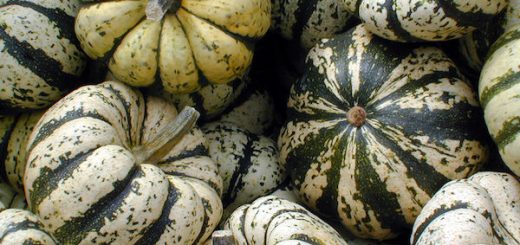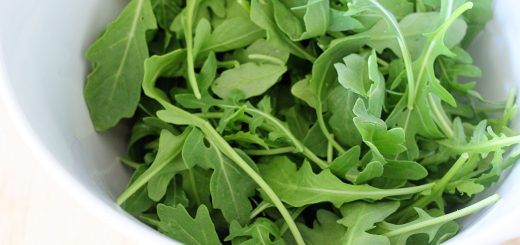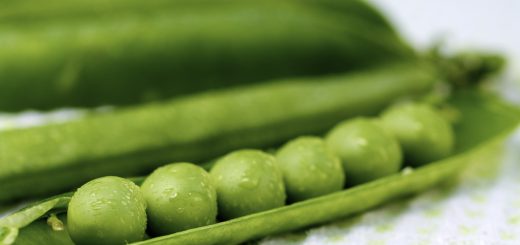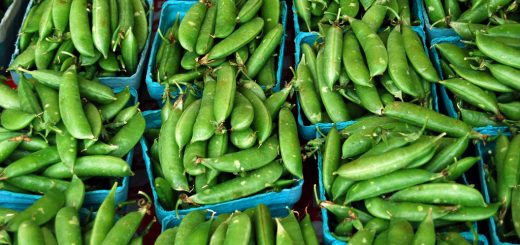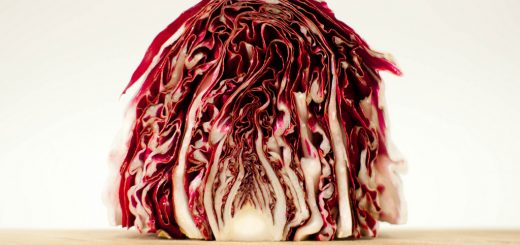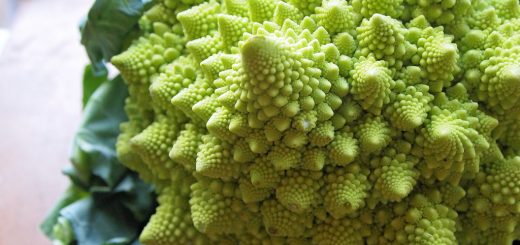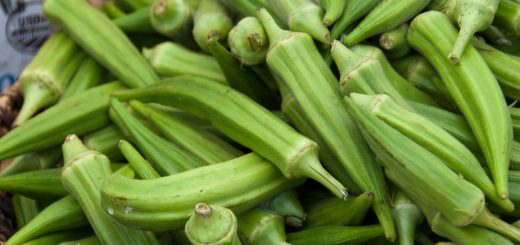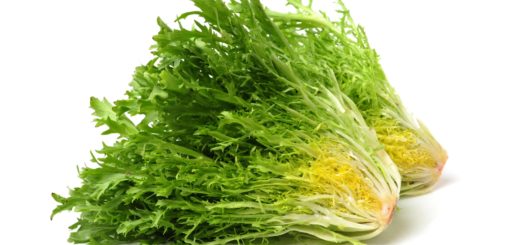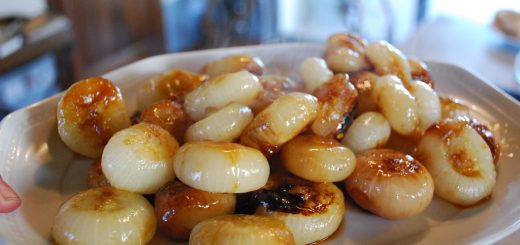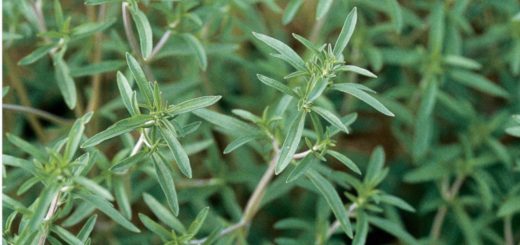Category: Featured Produce
When you need a smaller alternative to a big winter squash, sweet dumpling squash is the answer. About the size of an extra large apple, this single-serving squash usually weighs under one pound apiece and is shaped like a miniature pumpkin due to the scalloped lobes that form the rind. The skin is often white with mottled yellow, orange, and/or green markings. Inside, the flesh is smooth, tender, and sweet, with a bright orange color. Like all winter squash, it’s a great source of vitamins A and C, beta-carotene, and fiber. (more…)
If you ever see a salad green referred to as “rocket,” it’s simply another name for arugula, or roquette in French. Yet another brassicaceae along with kale and cauliflower, its delightfully pungent leaves have been cultivated in the Mediterranean since time was recorded. As such, arugula is a perennial favorite in Italian cooking. (more…)
Garden, or English peas, are your standard “pea in a pod.” They have more nutrients and calories than snow or sugar snap peas and are a bit more work as they need to be shelled. Garden peas are sweet and succulent for three to four days after they are picked, but turn mushy and starchy very quickly after harvesting. So use them fast! (more…)
Sugar snap peas, unlike last week’s garden peas, have edible pods that are filled with plump sweet peas. Use them quickly as they lose their flavor and structure when stored. They can be eaten raw, but are best when cooked, requiring little time: steam sugar snaps for about 4 minutes.
Sugar snap peas are a member of the legume family and are a good source of folate, vitamins A and C, and zinc.
Radicchio, along with Belgian and curly endive, frisée, and escarole, are members of the leafy chicory family. Radicchio is characterized by variegated purplish-red leaves that can be a touch bitter and spicy, which is why it is generally used as a component, rather than the main ingredient, in most salads. (more…)
Romanesco cauliflower is a member of the Brassica family, which includes cabbage, Brussels sprouts, broccoli, and kale. This unique cauliflower originated and was first identified in the 16th century in Italy. Sometimes called Romanesco broccoli, it looks nothing like broccoli and its flavor is much milder and sweeter than either broccoli or cauliflower. (more…)
In the south, it’s available year-round, but for the rest of us, summer is a great time to take advantage of fresh okra. While it looks like a ridged pepper, okra belongs to the same family as hibiscus and cotton, and likely came to the U.S. from Africa more than three centuries ago. (more…)
Curly endive, also known as frisée, is a leafy vegetable in the chicory family. (Other chicory types include bitter veggies like escarole, radicchio, and the white-leaved Belgian endive). Curly endive is a crisp bitter green can be used as an addition in salads, or can be cooked as a side dish. The inner pale leaves are somewhat more tender and mild than the bitter outer ones.
(more…)
Cippolini (aka Cipolline) are small flat onions with a mild flavor. Their flat shape and size make them excellent candidates for roasting whole.
The biggest problem with these little gems is getting the skin off. Use a paring knife to cut strips of the skin from one end to another. Boiling briefly may also help to get the skins off. But all that work is well worth it! (more…)
Summer savory is commonly used as a flavoring for soups, stews, and marinades. But it is also known as the “bean herb” because it goes so well with many types of beans, especially green beans or any other type of broad bean. It is also quite tasty in stuffings, with any type of meat or chicken, or sausages. For a different use, try it in scrambled eggs or omelets. Add it to a salad dressing recipe for an aromatic flavor. (more…)
